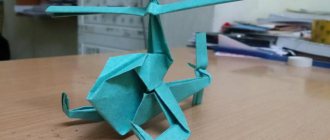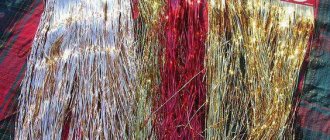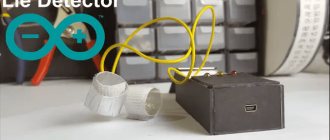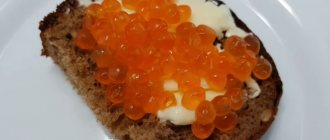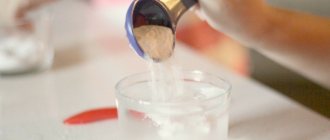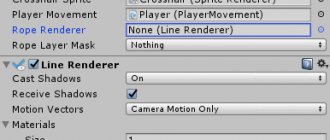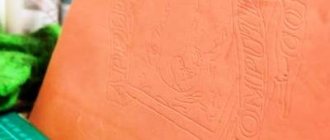How to make a twister game with your own hands
.
Twister game rules. Twister is a game that ties you in knots. The one who stands last wins. A step-by-step guide to making a twister game yourself, the rules of the twister game, photos of the twister game, as well as tips on buying a twister game for the lazy.
What is Twister?
Twister is played on a large plastic mat, which is spread on the floor or ground. Mat size 150x180. This checkmate is similar to a board game. It has four rows of six large colored circles: red, yellow, blue, and green. The roulette wheel is attached to a square board and serves as the dice in the game. The roulette wheel is divided into four marked sections: right foot, left foot, right hand, and left hand. Each of these sections is divided into four colors (red, yellow, blue, and green). After the spin, a combination is called (eg: right hand on yellow) and players must move their corresponding hand or foot to the point of the appropriate color. In a two-player game, both people cannot place their hand or foot in the same circle at the same time. The rules vary for more people. Due to the lack of colored circles, players will often be required to put themselves in awkward or unstable positions, which will ultimately result in someone falling. A person is eliminated if they fall or when their elbow or knee touches the mat. There is no limit on the number of players playing at the same time, but more than four are barely included.
History of the game twister
Twister was proposed for a patent by Charles F. Foley and Neil Rabens in 1966, but it did not take off until Eva Gabor played it with Johnny Carson on the Tonight Show on May 3rd, 1966. Although Twister was patented by Charles F. Foley and Neil Rabens, sources also mention a man named Reyn Guyer. He claimed that he came up with the idea for Twister while working for Johnson's Shoe Polish promotion for his father's company. It is said that Guyer originally called this new game idea Pretzel, but that Milton Bradley changed the name to Twister before they launched the game to market. However, the claim that Reyn invented Twister is a lie. According to the US Patent Office, there is no connection between the twister and the Guyer name. Foley and Rabens are considered the inventors and their names are the only ones associated with this patent. Their only connection to Guyer is that they were employees of his father's company.
Step-by-step guide to making your own game
To make a Twister game we need:
- 2 sheets of whatman paper,
- scotch,
- self-adhesive film in four colors - red, yellow, green, blue (you can use colored paper and glue or paint and a large piece of transparent polyethylene).
- Compass,
- scissors,
- pencil,
- ruler,
- cardboard size 30x30 cm,
- button with flat head,
- a thin wooden stick (this device is necessary if there is nowhere to get a ready-made arrow).
Mini twister (finger)
Rules of the game
The field is placed on the table. One hand is used in the game, and the other throws the dice. Any participant rolls two dice at once and names the dropped color and finger (it is white on a black hand).
If the entire white palm falls out, then any finger of the player’s choice.
Each player, without lifting the remaining fingers already placed on the field, completes the task, occupying the free circle of the desired color with the desired finger.
Everyone does this at the same time. If the player fails, he is eliminated.
The one who remains wins.
PS: If the right finger is already on the right color, then it’s up to everyone to decide whether to move the finger to another circle of that color or not.
- Download, print the game “Mini Twister (finger)” and play! (pdf, jpg)
- Watch the game “Finger-twister on video...”
Board game Twister (for fingers!). How to make: download, print or redraw! Two people can play on one sheet, and by gluing together several identical sheets, you can play with any team! Includes: instructions, game board, two dice
Game description
The Twister game consists of a large playing field (mat), which is laid out on the floor, and a roulette.
The size of the mat is 150 x 180 centimeters. It is an oilcloth or sheet on which large circles of green, red, blue and yellow are drawn in four rows.
Roulette is similar to a clock, only the hands do not move themselves, but are rotated by the players. The “dial” is divided into four segments, which are also divided by color.
Roulette information
| Segment | Color |
| Right leg | Red |
| Right hand | Blue |
| Left leg | Green |
| Left hand | Yellow |
Story
Fans of the game "Twister" should thank two American inventors for its creation - Twister Charles F. Foley and Neil W. Rabens.
It’s hard to imagine, but in the first years of its existence the game was not particularly popular. And all because of the wrong marketing move. Instead of promoting the product to young people (who this game could not be better suited for), the management for some reason decided that their potential customers should be the average American mothers aged about 35 years.
The fun would have been lost on the shelves of toy stores if not for His Majesty’s chance. On May 3, 1966, the host of the very popular Tonight Show, Johnny Carson, offered to play Twister to guest star Eva Gabor. And while the actress in her evening dress elegantly moved around the playing field, most of the spectators had already rushed to call stores and place an order for the purchase of “Twister”. After this momentous day, more than three million copies of the game were sold within a year.
Today, “Twister” is still just as popular, both in its native America and in other countries. And all rights belong to Hasbro.
Secret
Marriage or necessity?
Let's start with the hook. Anyone who encounters a tape measure for the first time has noticed that the hook at the end of the measuring tape is poorly secured and that it dangles. And he probably thought it was a marriage. However, it is not.
This play is not accidental, and is made on purpose - it is equal to the thickness of the metal from which it is made. This eliminates the occurrence of measurement error.
Zero if from item
When measuring from an object, the hook moves towards the measuring tape and becomes the zero point of measurement.
The hook moves away - measurement without error
If the measurement is made with the grip of an object, then the grip is shifted by the thickness of the material from which it is made, and thereby compensates for this value.
Boiler
The main part of the roulette is the boiler itself. According to tradition, valuable wood species are selected for its production. The diameter is about 90 cm, its surface is well sanded and varnished several times. Ideal smoothness and absence of roughness is a guarantee of uniform movement of the turning mechanism. Now there are plastic boilers - this is a budget option - but not a single self-respecting gambling establishment will put such a thing in the hall. The model looks cheap, but its wooden counterpart looks noble and presentable. In addition, condensation may appear on a plastic boiler.
The internal part, hidden from the eyes of the average person, is also made of wood - one cannot be negligent in the manufacture of this part either. It is important to process everything efficiently, otherwise the wood may warp under the influence of moisture or temperature changes, which will negatively affect the rotation of the structure.
The cauldron is the stationary element of the roulette wheel. In the central part there is a spindle on which a spinning rotor is placed, and the turret is not only a decorative element, it serves as a storage place for a spare ball.
The top side of the boiler has a bend - this is done so that the ball does not fly out. Below is an apron - a surface with deflectors located on it.
Main types of breakdowns
The most common measuring tapes have a mechanical return mechanism - a spring that automatically rewinds the tape. It is this type that most often breaks down compared to a tool with a manual winding method.
The most common reasons why a tape cannot be returned are:
- spring break;
- breakage of the measuring tape at the junction with the spring;
- break or bend of the tape.
In order to find out the exact reason, you need to disassemble the tool:
- Unscrew the bolts that hold the side of the tape measure.
- Remove the backstop.
- Extend the measuring tape to its full length. If it is attached to a spring, remove the latter from the hook.
- Open the coil in which the return mechanism spring is located.
How to make Twister Junior from KFC at home
Another recipe for a juicy roll stuffed with strips, cheese, pickled cucumbers and onions. Additional ingredients that will add a piquant taste include mustard and tomato ketchup. In this recipe we will make our own flatbread. Let's start by making the cheese tortilla:
- Add a teaspoon of sugar and salt to 100 ml of boiled water, add a packet of dry yeast and stir. Leave for 15 minutes.
- Melt 50 grams of butter.
- Add it to the water with yeast and stir.
- Add finely grated hard cheese (150 grams).
- Add flour gradually, for a total of 200 grams. Stir constantly
- Cover with a towel and let it rise.
- Roll out the prepared dough into flat cakes.
- Place them in a hot frying pan to which vegetable oil has been added.
- Fry on each side for 30 seconds.
Now it's time for the chicken strips. Cut the fillet (300 grams) into thin strips, salt and season with spices. Dip the pieces of meat in flour and place in a sieve. Place it in cold water for half a minute. After removing from the water, roll the meat again in flour.
Pour vegetable oil into a deep frying container and heat it. Drop the meat in small portions and keep them there until golden brown. Remove from the oil and place the strips on a paper towel or napkins.
All that remains is to put everything together. Coat the tortilla with ketchup, place pickled cucumbers on it, which have previously been cut into circles. Then a layer of strips, mustard sauce, and onions cut into rings. Finish with a slice of melted cheese. Roll up the roll and enjoy its taste.
How to make a playing field?
Regardless of what the DIY Twister game is made from (fabric, maple or paper), the standard playing field should have a size of 150 x 180 cm.
After the base is ready, start creating six circles. They can be:
- cut from fabric, then sew or glue to the base using special glue;
- paint;
- cut out of paper and glue to the base.
In a standard game, there is a certain order for filling the playing field with circles:
- 1st row - red;
- 2nd row - blue;
- 3rd row – yellow;
- Row 4 – green.
You can scatter the circles in a chaotic manner at your discretion. It will be even more interesting this way. The main thing is to maintain the proportion - 6 circles of 4 colors.
How to make a roulette?
We offer you templates for two versions of roulette to create the game “Twister” with your own hands.
The first is classic, in the shape of a square or circle. The easiest way to make such a roulette is as follows:
1. Take thick cardboard or a thin board. Can be painted any color you wish.
2. Make sectors: draw with paints, markers, pencils, or cut out and glue individual parts from paper.
3. Make a rotating pointer in the center of the roulette:
- take a stick (for example, an ice cream stick), make a small hole in it in the middle, attach it to the board with a bolt and nut;
- cut out an arrow from thick cardboard and attach it to the dial with a small nail;
- Just put a pencil in the middle of the tape measure.
The segments should be as follows:
- left leg: marks (circles or squares) in red, green, yellow and blue;
- left hand: red, green, yellow and blue marks;
- right leg: red, green, yellow and blue markings;
- right hand: red, blue, yellow and green marks.
An example is shown in the picture.
Win-win roulette strategy - truth or myth
Almost all gamers are chasing the ideal system that can give maximum winnings without risking their wallet. At the moment, a win-win roulette strategy is nothing more than a myth. Imagine the situation if it existed. Within one or two days, all casinos would lose money and cease operations. Opening gaming clubs would be a futile exercise. Why do this if anyone can apply the strategy and win at European roulette.
Despite the absence of such algorithms, many beginners fall for the tricks. They buy 100% systems for playing roulette and end up being fools. There are scammers here who play on the trust of newcomers and take money for a “dummy”. In the best case, a person receives a unique strategy with an efficiency of 60-70 percent, and in the worst case, a conventional system downloaded from the Internet with minimal results.
Homemade scanning laser rangefinder
Good day, readers! I'm sure I'm not the only one wondering about purchasing, or better yet creating, a fairly accurate rangefinder with my own hands, with the ability to measure distances of at least several kilometers. A long time ago I became acquainted with interesting material, thanks to which I learned to approximately measure distances using the “thousandths” method. When using this method, as you know, you need to know the dimensions of the remote object. Those who have encountered this know that in the mountains it is difficult to find an object with familiar dimensions. Therefore, I also wanted to have another method that did not require prerequisites. Yesterday, I accidentally came across the design of a homemade optical rangefinder on the Internet. Next is a little copy-paste: “It is difficult to determine the distance by eye. More or less a person copes with this task on level ground. If there is a ravine or river between the object and the observer, then you can make a mistake two to three times. A mirror rangefinder will help you accurately estimate the distance to various objects.
Make blanks from 33 mm plywood, thin planks or other rigid sheet material, connect them with wood glue into a longitudinal case, leaving the top cover 4 open. End walls 5 are made after the gutter from parts 1, 2 and 3 has already been glued together. Then At the top of the box, attach mirror strips measuring 25x50 mm, as shown in the figure. Glue mirror A tightly with BF-2 glue to the block connecting parts 2 and 5, and mirror B to the flat of the rotating axis. Insert this axis with the lower end into the hole of part 3, cover the case with lid 4 so that the upper end of the axis falls into the hole of part 4. Place an arrow-pointer (made of tin or aluminum) on the upper end of the axis, lubricating the joint with BF-2 glue, and strengthen the protective clamp.
The next stage of work is graduation. Using a measuring tape or ruler, measure 50 m from some vertical object, such as a telegraph pole, and stand in this place. Slowly turning mirror B, align the images of the lower and upper parts of the pillar. Mark the position of the arrow on the scale and write against this mark: “50 m”. Then measure 100 m from the pillar, again combine the images of the “halves” of the pillar, mark the position of the arrow with a mark, writing against it: “100 m” - etc. After calibrating the distance between the marks, divide by eye into smaller parts.
The accuracy of the rangefinder also depends on the length of the arrow: the longer it is, the greater the distance its end travels (at the same angle of rotation of mirror B). But you shouldn’t make the arrow particularly long - this reduces the interval of measured distances. To prevent dust from getting inside the device, insert pieces of glass, thin plexiglass or transparent celluloid into the three holes.
Paint the finished device with nitro or oil paint in a protective color.”
I also read in other articles that instead of mirrors you can use laser pointers, a small magnifying device (some kind of mini monocle). I want to know if anyone has come across such a device? If yes, what subtleties are there in the design? What suitable parts can be made from? Recommended length of the device for more accurate measurements and over long distances. And in general, I will be glad to hear any thoughts about the rangefinder - this and others in general. Thank you!
Homemade rangefinder. Cheap and cheerful
In general, budget-friendly ways to measure distances. We share, discuss, propose.
Mechanical rangefinder. How to make your own rangefinder device, which allows you to relatively accurately determine distances to objects located almost 100 m away from the observer. The minimum distance that the device can determine is 70 cm. The base of 1 rangefinder is a metal plate with a thickness of 1.5 mm and dimensions 80 x 130 mm. At one long edge of the plate, a movable metal strip 2 18 mm wide is attached, the edges of which are bent 13 mm high. A hole with a diameter of 2 mm is drilled in one such edge, and a groove of the same width is sawn in the other. Two corners are attached to the other long edge of the plate. A hole with a diameter of 2 mm is drilled in the first corner (3), and a groove 2 mm wide is sawn in the second (5). The distance between the holes of the corner and the movable bar should be 65 mm - it corresponds to the approximate distance between the centers of the pupils of the eyes of most schoolchildren. The movable bar fastening screw is tightened so that the bar can rotate freely around it. In this case, the angle between straight lines drawn through the centers of the holes and slots of the movable plate and corners will change, and therefore the viewing angle will also change. The larger this angle, the farther the object is from the observer. All that remains is to measure the angle and use it to determine the distance to the object. But we will not engage in any calculations, but will make a reference device that will allow us to immediately determine the distance. The reference device is a handle 4, cut out of aluminum, duralumin or other metal with a thickness of 1.5 mm. The rim of the handle has a surface with a variable radius of curvature relative to the axial one, which allows you to smoothly move the movable bar when turning the handle. The handle is strengthened at such a distance from the bar that in the position of maximum deviation of the bar, the lines drawn through the centers of the holes and slots of the bar and corners are parallel. Then the other extreme position of the handle will correspond to the minimum possible measured distance. The movable bar is pressed against the reference handle by a device consisting of a limiting plates 6 and springs 7. The end of the spring is clamped under one of the plate fastening screws, the other end of which is inserted into the hole in the bend of the bar. If you now take the rangefinder in your hands, you can observe various objects through the holes and slits. By rotating the counting knob, make sure that the object is visible with both eyes at the same time (to control, you need to alternately close your eyes). This position will correspond to a certain angle of view, and therefore a certain distance to the object. The distance is measured on a scale opposite the plane of the side edge of the handle. Naturally, you will have to calibrate the scale yourself by placing the object at pre-measured distances from the observation location. This is not difficult to do, and we hope you can cope with this task.
Somewhere else it was proposed to use a laser laser in conjunction with optics.
Well, that's it, now they'll throw hamsters at me
The distance between the holes of the corner and the movable bar should be 65 mm - it corresponds to the approximate distance between the centers of the pupils of the eyes of most schoolchildren.
This is all good, but you have to carry your schoolbag with you everywhere? Such an important advantage of the device as compactness is lost. In general, he’s a boy. Save up for Nikon. I did it and I recommend it to everyone.
Well, a student’s budget isn’t enough for Nikon, but https://www.jj-connect.ru/index.php?GID=750 is enough!
Wow, brother, these are scammers. (c) Rangefinders are, in principle, rangefinders. People use it here. spits, really. But anything is better than your version with a schoolboy. Take it. But, remember! (c) - from Nikon states for $220 with shipping
So JJ is a “rangefinder” in quotation marks, just like a Tasco “sight”? I'll save up for Nikon.
I have a rangefinder. normal device. current must be selected when purchasing. measure a known distance. It works reliably even through car glass. there is no need to scold him - he is not worth more than you pay for him
+1, and it’s okay that there’s an anti-shock system inside with adhesive tape, but it can always be repaired in the field
I was also given a JJ rangefinder, I’m plowing for now, I checked the distance with a roll at 55 m. Error + - 1 m. I measured the maximum in the sun. weather 734m
The project is interesting and cheap, I’ll get some metal then I’ll do it, if it works out I’ll save on the range finder.
How to make a rangefinder with your own hands
Rangefinders are used in photography, when it is necessary to determine the distance from the camera to the subject being photographed in order to correctly configure the device.
To build it, you will only have to buy a small pocket mirror, which should be of good quality and possibly thinner.
The diagram of the rangefinder device is shown in Fig. 1, and in Fig. Figure 2 shows a general view of the device.
As can be seen in the figures, one of the mirrors is installed motionless, and the second can rotate on an axis. The fixed mirror on the reverse side, on the varnish and amalgam side, is divided by two lines into three strips of equal width. The lines must be scratched with the tip of a steel needle, and then using a razor blade, scrape off the varnish and amalgam from the middle strip.
Both mirrors are then secured using tin brackets on a wooden plank. For a fixed mirror, the bracket is made according to Fig. 3 and is attached to the base using two nails or screws.
The bracket for the movable mirror is made according to Fig. 4. An axle made from a pin is soldered to the back wall of the bracket, exactly along the middle vertical line.
From below, a long thin lever is mounted on this axis, which is also soldered to the axis, but this soldering must be done later, when the angle between the plane of the bracket and the lever is precisely determined. To rotate the axis, a small hole is drilled in the wooden base.
In addition to these parts, you need to make an eccentric, a disk and a spring (Fig. 1 and 2).
The fixed mirror is fixed at one end of the base, the movable one at the other. A hole is drilled in the middle between the mirrors into which the axle is inserted. On one side, an eccentric is put on this axis, and on the other, a disk. Both of these parts are soldered to the axle so that they rotate with some friction. It is useful to place a spring washer under the disk for this.
Having strengthened the eccentric and the disk, they are placed in the position shown in Fig. 1. Now strengthen the spring, with the help of which the lever is pressed against the edge of the eccentric. Without moving the parts, the position of the fixed mirror is accurately measured. It should be at an angle of 45° to the edge of the base. The movable mirror is placed at exactly the same angle to the edge of the base so that the planes of both mirrors are parallel. Having noticed the position of the lever, it is soldered to the axis of the movable mirror.
The rangefinder cover can be made of wood, cardboard, or tin (Fig. 2). In one of the long walls of the lid, exactly opposite the center of the fixed mirror, a round observation window with a diameter of 4-5 mm is cut. Exactly opposite this window, a square window is cut in the opposite wall, equal in size to the mirror. The same square window is cut opposite the movable mirror. A hole is drilled in the upper wall of the cover for the upper end of the axis of the movable mirror.
The device is picked up and brought to the eye. Looking through the observation window, they point the device at some distant object, for example, at a distant house (the distance should be at least 80-100 m), and begin to rotate the disk. The image of the house will take the form shown in Fig. 5 on the left. Then, by rotating the disk, they monitor the image and, when the vertical lines of the house merge and it will be visible, as shown in Fig. 5 on the right, the rotation is stopped and the device is turned upside down. Carefully, so as not to move the disk, the first division is applied to it and an infinity symbol is placed next to it (Fig. 6).
Now turn the disk exactly on a half-circle and apply the second division. Putting the device to the eye again, point it at some close object. Without moving the disk, they begin to approach the observed object, monitoring the coincidence in the rangefinder. Having found the moment when the lines merge, they accurately measure the distance to the object and apply it to the disk. Let’s assume that this distance turns out to be 1 m. This means that the device will give readings ranging from 1 to infinity.
DIY Ultrasonic Rangefinder - Assembly Kit.
- Price: $6.05 (with coupon BGKSTDIY $4.99)
- Go to the store
The board that is to be soldered is not poorly made, but the component values are not labeled, so without instructions with a sign that corresponds to the ratings, it will be a bit difficult.
Briefly about the element base.
Controller STC11F02, CD4069 inverter assembly.
CX20106A, judging by the description from those that I could find, is a preamplifier for the receiver of IR signals from remote controls. Nearby is a resistor assembly.
Set of capacitors, 12 MHz crystal and 8550 transistor
Resistors, connectors, a bed for a microcircuit and a beeper.
And of course the display.
There is also a label for quality control control in the package.
Making a classic field for Twister
White fabric is suitable as a basis for the playing field. It is not necessary to specifically buy a piece of material; any unnecessary light sheet will do. You can also use thick opaque film. The standard size of “Twister” for four players is 150x180 cm. If you want your homemade game to please you for many years, do not be lazy to process the edges of the material. The playing field must be divided into six equal stripes, placing them along its long side. One strip on each edge must be left blank. The four middle stripes are evenly filled with colored circles. As a stencil for circles, you can use a cup or vase of a suitable diameter. The outlines of the circles are drawn directly on the field and then painted over with fabric paint. It’s not difficult to make such a “Twister” with your own hands. The most important thing is to dry the field well after applying the paint, and you can begin the fun game.
Deflectors
Small diamond-shaped things are installed on the apron to make the movement of the ball unpredictable. They are also called pins, diamonds, stops, planks, destroyers. Modern roulettes have eight deflectors, while rare wheels have sixteen. They are made of metal and are arranged symmetrically - vertical and horizontal alternate. When the ball sets off, it first goes down the track, then passes along the apron, hits the deflectors, and only after that it hits the rotor from where it goes straight to a certain pocket.
(Optional)
You can add cup holders. It depends on the desire whether you want them or not. When playing roulette, it is very convenient to have a cup holder near you.
What you need to do is measure the size of the cup holder holes. It is recommended to cut holes about 5 inches into the chipboard where the players will sit.
The note! Now is the time to think about the drum - are you going to buy one that will sit on the table or one that you will install under the surface of the table. This is the perfect time to cut holes for it.
Home I-Twister
Now let’s look at how to prepare the popular I-Twister at home so that it turns out no worse than in KFS restaurants.
Since this is a homemade version of a twister, there is no need to complicate your task by preparing flatbreads. Just grab ready-made tortillas from the store.
The complete set of ingredients to prepare I-Twister as in FSC is as follows:
- packaging of wheat flatbreads;
- chicken nuggets or strips breaded with corn flakes;
- lettuce leaves (regular leaf or iceberg);
- fresh tomato;
- 50 grams of hard or processed cheese;
- cheese sauce;
- ketchup;
- mayonnaise.
If you have a pancake or Teflon frying pan, you can use regular hard cheese for the recipe, not Elmenthal. But it is important that it melts well. That is, you definitely shouldn’t take cheap cheese products.
The cooking process looks like this:
- fry breaded chicken meat with a crispy crust;
- brush tortilla with cheese sauce;
- place a lettuce leaf on top;
- using a Teflon frying pan, heat a plate of hard cheese until it begins to melt;
- then carefully transfer the melted cheese onto the lettuce leaf with a spatula or a quick movement;
- lay out a few pieces of chicken, pour mayonnaise and ketchup on top;
- add chopped fresh tomatoes;
- pour a little more cheese sauce on top;
- wrap in an envelope or roll.
Since the tortilla may seem damp, you can place it in a dry frying pan before or after rolling it and dry it. This way the twister will also be crispy.
Arrow
How to make a twister for a twister? The role of a direction indicator will be successfully played by: a stick for an ice cream, a scrap of a scratch card or a small strip . Punch a hole in the center of the future arrow. Then pass a thin nail with a wallpaper head through it (there should be no friction). Finally, stick the arrow holder into the center of the game board.
Now you need to make sure that the nail is firmly seated and the pointer rotates without any difficulty. If the arrow is in contact with the cardboard, lift it off the surface of the field. With this your work has come to an end, the twister is ready.
Asian home twister
All the beauty is in the sweet and sour sauce. Of course, you can make your own sweet and sour sauce. But the easiest way is to buy it ready-made in a store.
Ingredients you will need to take:
- wheat tortillas (tortillas);
- 200 grams of chicken fillet;
- lettuce leaves;
- 50 grams of bacon;
- 40 grams of sesame seeds;
- 4 tablespoons sweet and sour sauce;
- pickled ginger to taste.
You can replace bacon with salami. Although it is with bacon that the twister becomes as tasty as possible.
Then everything is extremely simple:
- Make strips or nuggets from chicken fillet;
- fry bacon strips in a dry frying pan;
- brush the tortilla with a little sweet and sour sauce;
- top with lettuce, fried chicken, bacon;
- you can add rings of fresh tomatoes or pickled cucumbers;
- a little pickled ginger;
- Sprinkle generously with toasted sesame seeds on top;
- wrap the twister.
At the same time, no one is stopping you from adding different vegetables, experimenting with sauces, using different types of cheeses, and so on.
Blitz tips
- Gypsum should be diluted with water in a ratio of 1:3.
- When making a mold, wire can be placed into the prototypes. This will allow you to maintain the correct shape of the future fish.
- The hardening time of gypsum is approximately 12 hours.
- hardening time is 3-5 minutes.
- After the plaster has hardened, all unevenness in the form can be corrected. To do this, use a knife or sandpaper.
- To quickly melt old baits, they must be cut into the smallest pieces.
- It is better to use thermal gloves when working.
- Silicone should be melted at a power of 600 W.
- The melting process must be constantly monitored. Since it is very easy to ruin rubber. It is better to melt silicone in a transparent container.
- It is necessary to melt the silicone until it becomes a not very liquid jelly.
- When using a two-piece mold, unnecessary parts may form along the contour of the fish. They can be easily removed with scissors. And the remains can be used for further production.
- Using tin lids and an iron you can make a fish tail. To do this, place the cut silicone between the lids and cover with an iron. Bring the rubber to melt. This takes approximately 15 minutes. As a result, you can get a homogeneous “pancake”. You can make a twister from it.
- All precautions must be taken: work in a ventilated area and protect all exposed parts of the body.
- Store the manufactured twisters in separate containers. Otherwise they will stick together and may change color.
- You can apply a design to the finished bait with a waterproof felt-tip pen. If you apply red dots, the predator will think that the bait is wounded and weak. If you draw vertical black lines, the fish will think that this is not a bait, but a small perch.
- A damaged twister can be fixed. To do this, heat the two parts of the bait under an open fire and connect tightly.
- Ready fish can be immersed in a mixture of salt and attractant. This will give the rubber a smell, which will allow you to catch more fish.
- When making it, it is better to use bright colors and mix them.
- The cost of such baits is small. Therefore, making your own lures only makes sense if you want to make something unique and special.

